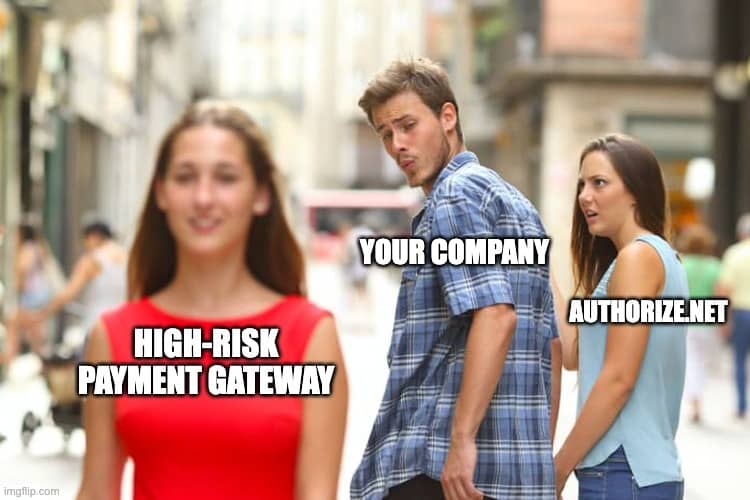R10: Customer Advises Not Authorized

Regarding automated clearing house (ACH) payments, ACH reason codes provide essential information about a transaction. ACH reason code R10 is one of the most common ACH return codes and indicates that the customer has advised the bank that the transaction is not authorized.
In this blog article, I’ll explain in detail what ACH reason code R10 is, what “Customer Advises Not Authorized” means, the common causes of this code, how to prevent it, how to investigate it, how to resolve it, and the best practices for doing so.
Table of contents
- What is ACH Reason Code R10?
- What is “Customer Advises Not Authorized” (R10)?
- Common causes of ACH Reason Code R10
- How to prevent ACH Reason Code R10
- How to investigate ACH Reason Code R10
- How to resolve ACH Reason Code R10
- Best practices for preventing ACH Reason Code R10
- Guidelines for responding to ACH Reason Code R10
- Resources to help you resolve ACH Reason Code R10
- Conclusion
What is ACH Reason Code R10?
ACH reason code R10 is a return code issued by a bank or other financial institution when a customer has advised the bank that a transaction is not authorized. It is one of the most common ACH return codes and can be triggered by various factors.
When an ACH return code R10 is issued, the bank or other financial institution will return the transaction to the originating bank (the bank that initiated the transaction). The originating bank will then have to take action to resolve the issue, or it will be unable to collect the funds from the customer.
What is “Customer Advises Not Authorized” (R10)?
The meaning of ACH reason code R10, or “Customer Advises Not Authorized,” is that the customer has advised the bank or other financial institution that the transaction is not authorized. This could be for various reasons, such as the customer needing to recognize the trade or be aware that the transaction will take place.
Common causes of ACH Reason Code R10
There are a variety of different reasons why ACH reason code R10 might be triggered. Some of the most common causes of ACH return code R10 include the following:
- The customer needs to be made aware of the transaction.
- The customer needs to recognize the company or person initiating the transaction.
- The customer needs to provide proper authorization for the transaction.
- The customer has changed their bank account information without notifying the originating bank.
- The customer needs to inform the originating bank before closing their bank account.
- The customer needs more funds in their bank account to cover the transaction.
- The customer has disputed the transaction with their bank.
How to prevent ACH Reason Code R10
Fortunately, there are steps that you can take to prevent ACH return code R10 from occurring in the first place. By following these best practices, you can minimize the risk of this code being triggered and ensure that your transactions are successful.
- Make sure that customers are aware of and authorize all transactions.
- Ensure that customers are familiar with the company or person initiating the transaction.
- Ensure that customer information is up-to-date and that customers are notified of any changes to their bank account information.
- Regularly monitor customer accounts for signs of insufficient funds or other issues.
- Make sure that customers are aware of any fees associated with the transaction.
- Provide customers with an easy way to dispute a transaction if necessary.
- Provide customers with clear, easy-to-understand information about the transaction.
How to investigate ACH Reason Code R10
If you have received an ACH return code R10, it’s crucial to investigate the issue and determine the root cause of the problem. The best way to do this is to contact the customer and ask them why they have advised the bank that the transaction needs to be authorized.
Once you have identified the cause of the issue, you can then take steps to resolve the problem. The steps you take will depend on the cause of the case. Still, standard solutions include refunding the customer, reversing the transaction, or providing additional information to the customer to clarify the transaction.
How to resolve ACH Reason Code R10
Once you have identified the cause of the issue and taken steps to investigate the problem, you can then take steps to resolve ACH return code R10. Common solutions include:
- Refunding the customer.
- Reversing the transaction.
- Providing additional information to the customer to clarify the transaction.
- Re-initiating the transaction with the customer’s updated bank information.
- Contacting the customer’s bank to request that the transaction be reversed.
- Contacting the customer’s bank to request that the transaction be authorized.
- Getting the customer to request additional authorization.
- Getting the customer to request additional information.
Best practices for preventing ACH Reason Code R10
By following these best practices, you can minimize the risk of ACH return code R10 being triggered and ensure that your transactions are successful.
- Make sure that customers are aware of and authorize all transactions.
- Ensure that customers are familiar with the company or person initiating the transaction.
- Ensure that customer information is up-to-date and that customers are notified of any changes to their bank account information.
- Regularly monitor customer accounts for signs of insufficient funds or other issues.
- Make sure that customers are aware of any fees associated with the transaction.
- Provide customers with an easy way to dispute a transaction if necessary.
- Provide customers with clear, easy-to-understand information about the transaction.
Guidelines for responding to ACH Reason Code R10
If you receive an ACH return code R10, you must take immediate action to investigate and resolve the issue. The following guidelines can help you respond quickly and effectively to ACH reason code R10:
- Contact the customer to determine the cause of the problem.
- Take steps to resolve the issue depending on the grounds.
- Monitor customer accounts for signs of insufficient funds or other issues.
- Provide customers with an easy way to dispute a transaction if necessary.
- Provide customers with clear, easy-to-understand information about the transaction.
Resources to help you resolve ACH Reason Code R10
If you need help resolving ACH return code R10, there are a variety of resources available to help. Here are some of the best resources to help you understand and resolve ACH reason code R10:
- The ACH Network website has a comprehensive list of ACH return codes and their meanings.
- The Federal Reserve Bank of Cleveland’s website has several helpful resources for understanding and resolving ACH return codes.
- The National Automated Clearing House Association (NACHA) website provides several helpful resources for understanding and resolving ACH return codes.
- The Electronic Payments Association (EPA) website has helpful resources for understanding and resolving ACH return codes.
Conclusion
ACH reason code R10 is one of the most common ACH return codes and indicates that the customer has advised the bank that the transaction is not authorized. By understanding the meaning of ACH reason code R10, the common causes of this code, how to prevent it, how to investigate it, and how to resolve it, you can ensure that your transactions are successful. With the right resources and best practices, you can minimize the risk of ACH return code R10 being triggered and ensure that your transactions are successful.
Want more information on how we can help your business thrive and integrate your payment processing with an ACH gateway? Contact us today, and learn more about what Zenti can offer you.
Read Next

Find out whether Authorize.Net works for high risk merchants, what restrictions you might face and how to get approved.

Get expert advice on selling CBD products on Shopify, including compliance tips and setting up secure payment options.

Find out why Square may deactivate merchant accounts and steps to resolve issues and maintain uninterrupted payment services.
Need a High-Risk Merchant Account?
Disruption-free payment processing at the best price for your situation, guaranteed.
Get Free Guidance Now!